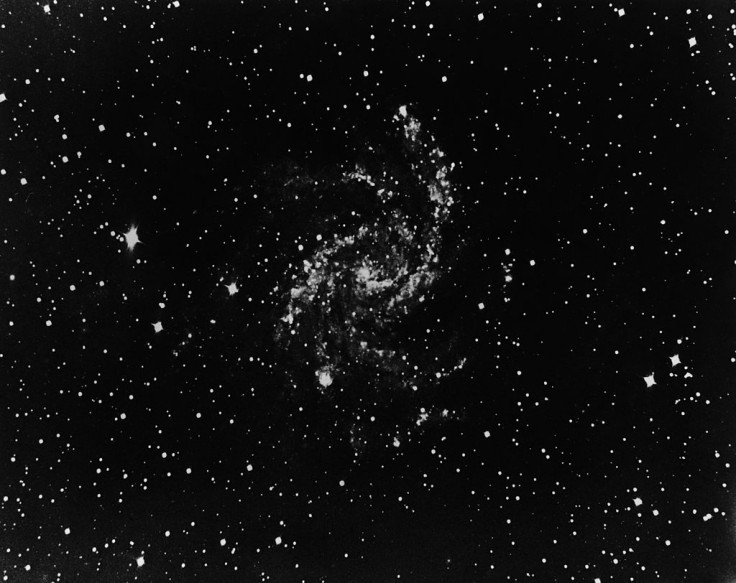
The NASA Hubble Space Telescope captured a weird celestial phenomenon of three identical objects in space. It took astronomers and space researchers eight years to understand the image, caused by an invisible galaxy cluster approximately seven light-years away. The amazing space discovery also revealed more about the mysterious "dark matter" in space.
According to NASA, astronomers saw many weird things happening in the vast universe, including events like exploding stars and colliding galaxies. With all these available researches on space, astronomers are shocked to see celestial objects they could not recognize.
On 2013, a rare phenomenon was captured by the Hubble. The said event featured three blobs of galaxies that eerily resemble one another. Interested researchers immediately investigated the case.
NASA Hubble Images: The Mysterious Double Galaxy
NASA Hubble tweeted the strange image on Wednesday evening, featuring space objects that look like mirror images of each other. NASA captioned the tweet, "Gravity warps the fabric of space, creating optical illusions like the ones in this Hubble image!"
Gravity warps the fabric of space, creating optical illusions like the ones in this Hubble image!
— Hubble (@NASAHubble) October 7, 2021
When astronomers discovered two objects that appeared to be mirror images of each other, it took years to unravel the mystery. Find out more: https://t.co/T05SDxTffz pic.twitter.com/Hfwf9GjdWJ
The tweet contained three magnified images of three parallel split streaks, taken from one specific galaxy. The discovery was made by an astronomer of Shawnee State University in Portsmouth (Ohio), Timothy Hamilton.
The "single" image, located at the top right of the tweet, is a wide stretched distant galaxy, easily recognized by its bright central core. This image, in itself, is perfectly "normal."
What shocked researchers were the second image labeled "mirrored image." The space object appeared as a perfectly identical image of the previously mentioned galaxy, duplicated into two parts. Astronomers called it a "three neatly parallel split streak" in the galaxy.
NASA Hubble Space Telescope: Hamilton's Object Explained
Research revealed the image as a trick of nature by gravitational lensing. This is a space phenomenon when a galaxy cluster's immense gravity affects, magnifies, distorts and emphasizes the galaxy behind it. Gravitational lensing often generates multiple images like funhouse-mirror distortions.
What's special about the latest NASA Hubble image is its nearly perfect duplication of the same galaxy in different segments of the sky. Richard Griffiths, a researcher at the University of Hawaii in Hilo, explained the phenomenon as bright wave patterns on the bottom of a swimming pool. "These bright patterns on the bottom are caused by a similar kind of effect as gravitational lensing. The ripples on the surface act as partial lenses and focus sunlight into bright squiggly patterns on the bottom," per NASA.
Griffiths also said it was an exciting discovery because the mysterious dark matter had a part to play in the celestial phenomena. "We know it's some form of matter, but we have no idea what the constituent particle is. So we don't know how it behaves at all."
The recent discovery, called "Hamilton's Object," might be one of the earliest determiners for dark matter research.
Related Article: Elon Musk Tweets Wild Video of SpaceX Starship Becoming a Lightning Rod--And It's Real!









